I exist, and yes, I am different: How the Moroccan youth lives
Categories: Africa | Photo project | Society | World
By Pictolic https://pictolic.com/article/i-exist-and-yes-i-am-different-how-the-moroccan-youth-lives.htmlAll the projects of the photographer Mohammed Kilito are somehow connected with his native country — Morocco, in which he wants to achieve changes. Belonging to LGBTQ+ here is punishable by imprisonment, they can even be persecuted because of unusual clothing. But the young Moroccans in his pictures are not afraid to show their identity, they embody the image of modern Morocco-changing and celebrating diversity.
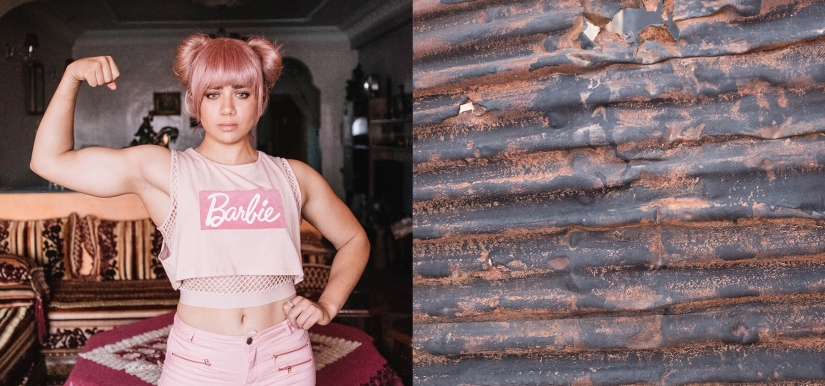
Photographer Mohamed Kilito lives and works in Rabat, Morocco. He has exhibited in Morocco, Great Britain, the Netherlands, Finland, and Spain. Published in The Washington Post, The Wall Street Journal, The British Journal of Photography, Vogue Italia, L'Express, Vice Arabia, and El Pais. (Further — the words of the author)
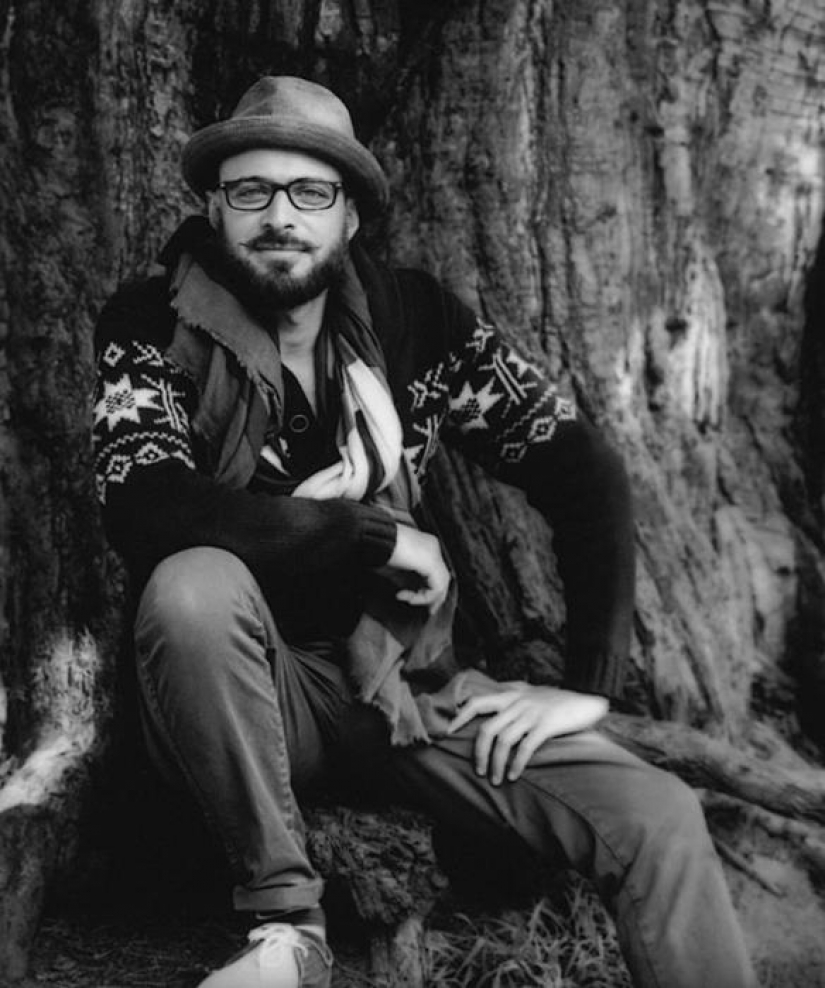
The people in my pictures represent the resilience of the palm tree-a tree adapted to the harshest climatic conditions in Morocco-they challenge the conservative and traditional norms of society on a daily basis. My heroes cultivate their own personal oasis, despite all the difficulties in a country that, in their opinion, is not developing at the same pace as they are. They inspire others by their example.
I have been told several times that these young men do not look like Moroccans. I usually ask in response: what does it mean to look Moroccan? This is a good start to challenge stereotypes and encourage people to think about how fast our society is changing. We live in a globalized world, watch the same TV shows, listen to the same music, worship the same idols, and dress the same wherever we are.
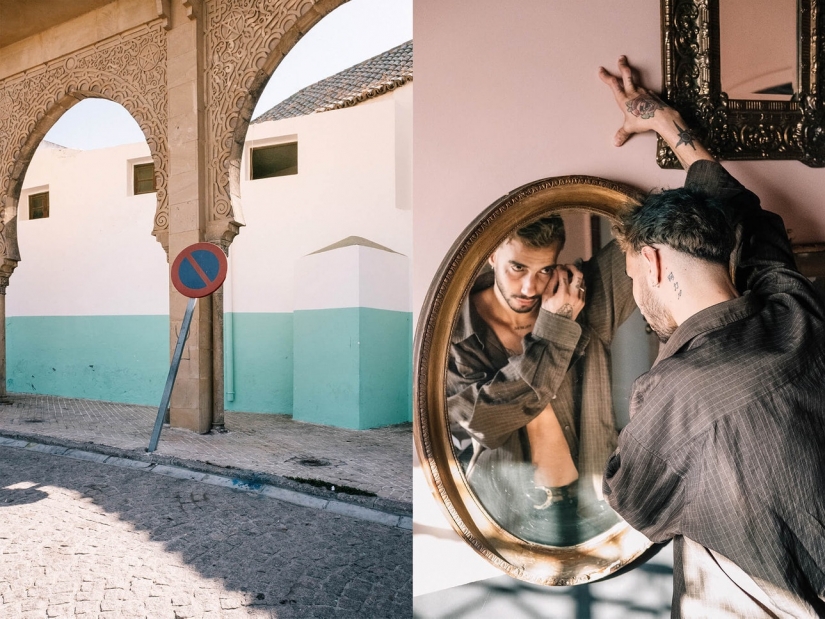
Tattoos mean everything to Aladdin. His body is a book, and they tell his story. Everything that happened to Aladdin — good or bad — is written on his skin.
Aladdin claims that people in Morocco don't understand him:
Anas says he has problems with his family. He is not called by name, but is pronounced "tattooed". This word, which has a pejorative meaning, says a lot about the stigmatization of those who have tattoos in Morocco. They are considered criminals and dangerous people. He is the Peter Pan of adults, feeling lost in matters beyond his control.
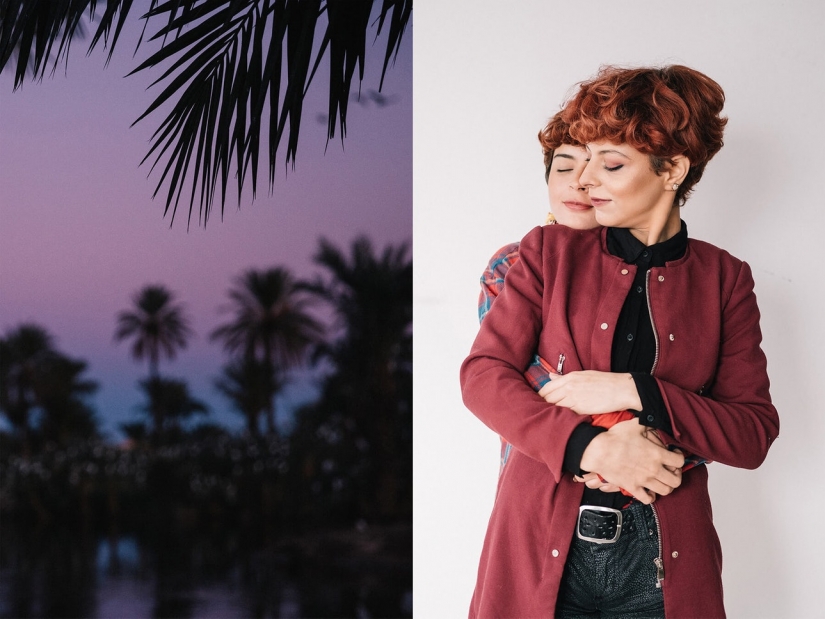
Hajjar and Ines is convinced that everyone should be able to be heard, express themselves and have the courage to say:
They claim that it is their duty as representatives of the queer community to organize a space in which they can safely exist. In their opinion, changes will occur when queer people take control of their destiny and become active
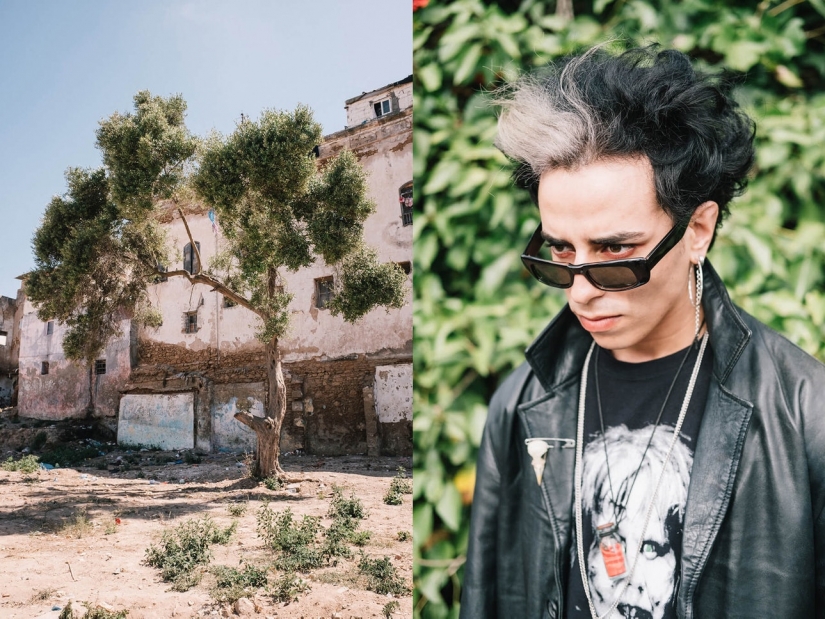
Nasser loves punk rock and ' 80s horror movies. He hates conformism and mainstream culture. He believes that people will never accept him for who he is, and that he will always be rejected. He thinks society is still not ready to accept that people dare to be nonconformist by expressing their identity. But he retains a sense of gratitude to the few who go beyond preconceived notions and do not judge by appearance
During the Kafkaesque trial, the evidence included a T-shirt with the words "Kiss My Ass", CDs with heavy metal music, and a plastic skull. As a result, some of the accused served two years.
For LGBT+, the situation is even worse: article 489 of the Moroccan Criminal Code criminalizes " indecent or unnatural acts with a person of the same sex." Same-sex sexual relations are punishable by a prison sentence of six months to three years and a fine of 120 to 1,200 dirhams.
The legal status of LGBT+ representatives largely stems from traditional Islamic morality, and the names of suspected homosexuals are usually made public. At the same time, the authorities are more loyal to them in resorts such as Marrakech.
So, in 2016, in Marrakech, two girls were arrested for the fact that a cousin photographed them kissing. The story caused an international outcry and launched the hashtag #freethegirls. The case was adjourned until December 2016, but they were eventually acquitted.
Through photography, I try to get people to reconsider their prejudices, it is my tool that helps to deconstruct the foundations to improve the situation. I am not going to tell people that their ideas about others are wrong, nor do I want to tell them that they are right. I just want them to reflect on the people and stories I capture.
Photography is my tool to help deconstruct the foundations to improve the situation. I was looking for heroes through social networks and friends. Finding, getting to know, and persuading people to take photos is part of the project. Unlike my previous projects, this time the young people were well aware of the image they wanted to convey. To my surprise, they were happy to be able to tell their story.
Every day before leaving the house, Randa puts on makeup and dresses. She lives in Tetuan, a city that is known for its conservatism. Randa says she has always been a "strange" child with a strong imagination who was attracted to the dark side. She presented herself to the world differently than others.
She was prone to self-harm and suicide. But after much work on herself, Randa recognized that society would never be homogeneous. She adheres to the principles that she intuitively believes in, and no longer worries about anyone's judgment
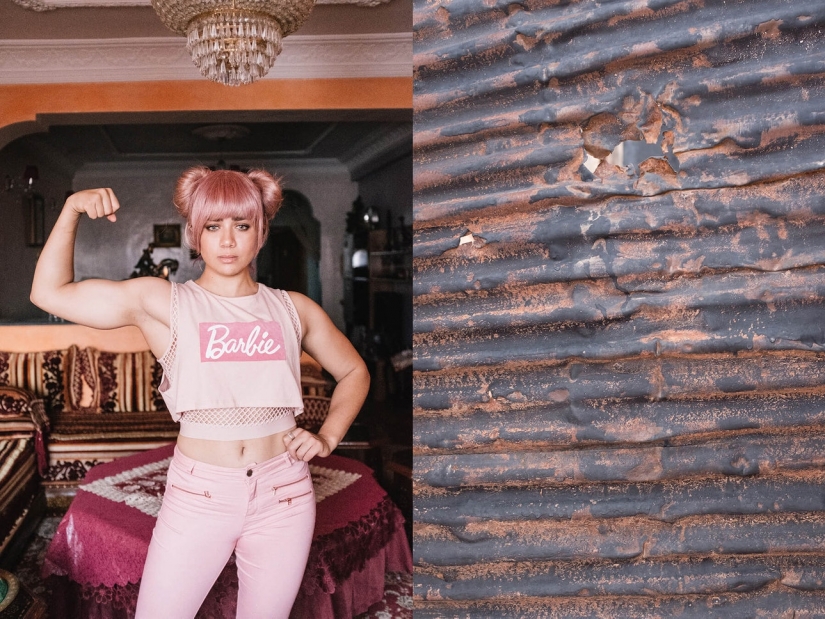
Salima's parents believe that weightlifting will deform her body and that her daughter will not be able to marry the man they have chosen for her. The girl feels that she no longer meets the stereotypical ideas and criteria of female beauty, but this does not bother her, because this is the body that she has always dreamed of
When I showed my photos, I was often asked if these people were Moroccan, so I decided to take photos from Morocco. Portraits of young people from Amsterdam, Paris, or New York expressing themselves are no longer interesting to us. We are used to their extravagant clothing and ease in talking about sexual orientation.
The situation in my country is different: it is rare to find people here who dare to deviate from the traditional norms still in force in the country. At the same time, in Morocco, we still live in a fairly liberal society compared to neighboring countries in the MENA region, but it is also a Muslim country where there are many conservatives. Due to the strong Islamization of society, young people who feel an urgent need for free expression can feel isolated and misunderstood.
I create diptychs and try to connect the stories of the characters and the accompanying photos. For example, Salma is a goth and loves everything strange, mysterious and unusual. It represents a non-standard ideal of beauty for Morocco.
The second picture shows actors and singers who could have been idols of her parents and represent the ideal of beauty of the previous generation. In this way, I want to draw attention to the changes that the new generation is causing by accepting themselves and opening up to other cultures.
I feel that I became a photographer also because of my country, and the ideas of my photo projects are always connected with Morocco. Even while living in In Canada, I felt that origin and culture were something I couldn't get rid of. I believe that it is my duty to ask the right questions, to stir up controversy, and to provoke discussion.
It is my duty to ask the right questions, to stir up controversy, and to provoke discussion. I consider myself not so much a photographer as a visual artist who is sensitive to a certain reality and wants to share it. The topics of my work interest me first of all. I don't think too much about the audience, but if they manage to identify with my projects, I'll be doubly happy.
Salma was born in a working-class neighborhood and grew up in a traditional family. She always tried her best to be herself. Salma is a goth and loves the strange, mysterious and unusual. She is an unusual ideal of beauty in Morocco and especially appreciates what is considered frightening, disturbing or ugly by the standards of society
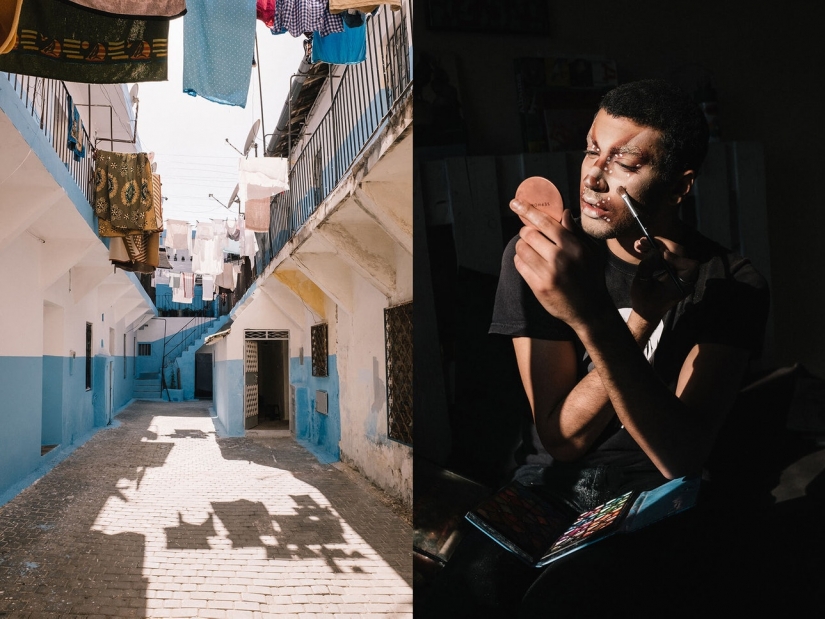
Shady describes herself as "a fairy in the land of ogres, a maniac of non-gender fashion, a mixture of pastels, blood, and an alternative punch bowl." In his very poetic way of life, he feels that he is misunderstood: society considers him a Satanist simply because of the metal ring in his nose
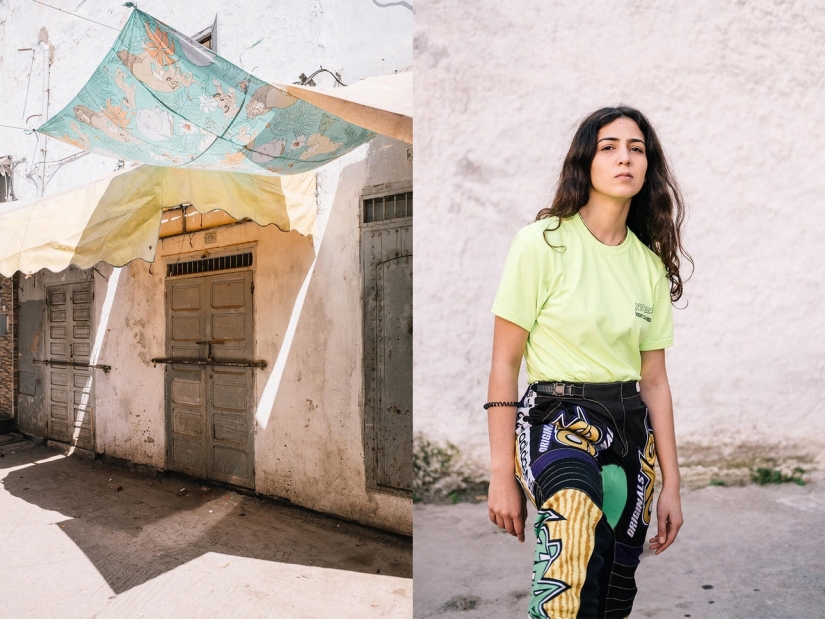
Sofia says that she started dressing in a certain style very early, which is why she constantly feels people's eyes on her. For her, the street is a territory where clothing can become a problem, it is perceived as a provocation
Meryam Tilila has hyperpigmentation of the skin caused by medication, which caused her to suffer from harassment on the streets. When you meet her, you quickly realize that this is a bright, determined and very confident girl.
Last year, she became popular on Instagram, and people supported her. She now believes that her spots on her skin are a "perfect imperfection" and, in a sense,her trademark. Today, Meryam works with fashion designers and photographers. They choose her because of her unique appearance
Keywords: Morocco | Youth | Informal people | Photo shoot
Post News ArticleRecent articles

Although digital photography and photo processing technologies have greatly advanced the boundaries of image manipulation, photo ...

This is very questionable from an ethical point of view, but no less popular event was held annually as part of the fair in ...
Related articles

It is well known that giving up bad habits, physical activity and good sleep can prolong a person's youth. More recently, another ...

Photographer Marie Tomanova of Czech Republic has continuously lived in new York for seven years. The past four years, she filmed ...

It is believed that the appearance of gray hair — it is a sign of aging, the gradual extinction of the organism. Many ...

Sometimes people commit such monstrous acts that they become an inspiration for horror filmmakers. Thus, the master of the genre ...